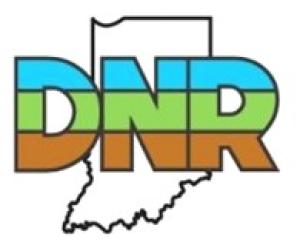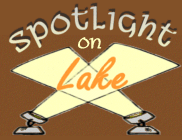
Buy your license now!
A new year calls for new outdoor adventures. Get a head start on the 2025 fishing, hunting, and trapping seasons by buying your annual license now in the new Division of Fish & Wildlife Activity Hub at GoOutdoorsIN.com.
Your 2024 annual licenses expire on March 31, but don’t wait to buy the next one. Purchase your annual license ahead of time to ensure you don’t miss out on a single moment of rest, relaxation, and recreation.

To access your account:
All customers must log in through Access Indiana. Those with existing Access Indiana accounts will be able to log in without disruption. When logging into the new system for the first time, you will need to look yourself up in the system and verify your personal information. After that, in your next log-in, you will be taken directly to your account page.

Light Goose Conservation Order opens Feb. 16
In 1999, the first Light Goose Conservation Order was issued in response to damaged Arctic breeding grounds. To conserve the tundra habitat, the Light Goose Conservation Order was instituted and is still in place today.
Light Goose Conservation Order season opens on Feb. 16. Indiana hunters can harvest snow and Ross’ geese (white and blue phases of both species) using electronic calls and unplugged shotguns and can hunt anytime between ½ hour before sunrise to ½ hour after sunset without a bag limit. All you need is a hunting license, an Indiana waterfowl stamp, and a special free permit (available online now or at FWAs early this month). Neither an HIP number nor a federal waterfowl stamp is required to participate.
DNR requests that hunters report any banded geese they harvest to the North American Bird Banding Program.

Free Fishing Days coming soon
This year’s Free Fishing Days are May 4, June 7-8, and Sept. 27. On these days, Indiana residents can fish the state’s public waters without a fishing license or trout/salmon stamp. All other rules such as seasons, bag limits, and size limits apply.
Plan for a year that’s full of free fun. Visit our Where to Fish map for all of Indiana’s best public waters. Find more fishing resources on our website.

Anthony Talarico Jr., a 2021 Fish of the Year Winner, holds his winning 29-inch burbot.
Check out the 2024 Fish of the Year Winners
The Fish of the Year program netted 161 total entries for 2024 submitted across 73 different species. Out of all of those species, this year’s longest fish was a 46-inch flathead catfish caught by Richard Morford in Eastside Park in Washington County. View the list of winners on our website now. Congratulations to this year’s group!

It's still small game season
There’s still time to go to the woods and join in on small game hunting across the state. Rabbit season continues through Feb. 28. Rabbits can be hunted with or without dogs and are a great way to ease into a new hunting hobby.
Certain restrictions apply on DNR-managed properties. Read about legal equipment and bag limits in the Hunting & Trapping Guide and buy your small game hunting license in our new Activity Hub.
Find your adventure at the Indiana State Fairgrounds
Visit the Indianapolis Boat, Sport & Travel Show
Visit the Indiana State Fairgrounds from Feb. 14-16 & 19-23 to enjoy the annual Boat, Sport & Travel Show. With more than 750,000 square feet of exhibitor space, there’s room to check out a kayak fishing showcase, see the latest angling gear from top brands, speak to a DNR staff member to buy your fishing license, and much more. Skip the line at the door and buy your tickets online now. See you in Tackle Town in the Blue Ribbon Pavilion!

Visit the Indiana Deer, Turkey & Waterfowl Expo
Get inspired for the upcoming hunting seasons by visiting the Indiana Deer, Turkey & Waterfowl Expo, Feb. 21-23, at the Indiana State Fairgrounds. Browse the latest hunting gear, speak to outfitters, and participate in archery demonstrations in the all-new Archery Alley. Find ticket information and the daily schedules online.
Learn about barotrauma
Due to barotrauma, anglers fishing Lake Michigan are encouraged to keep all perch caught in waters 45-50 feet and deeper. Barotrauma is the term for the injuries in fish caught at depths greater than 30 feet. The severity of barotrauma generally increases as the depth increases. These injuries are caused by pressure changes, leading to an expansion of gases in the bloodstream and swim bladder. Signs of barotrauma include bulging eyes, protruding air bladder or stomach, and an inability to swim upright. Barotrauma can often be seen in yellow perch, which are commonly found in 50-60 feet water in the Indiana waters of Lake Michigan. Bass anglers fishing deeper than 30 feet may also observe barotrauma.
Although “fizzing” the air bladder by poking a small hole in it or descending the fish back down to its original depth may help fish with barotrauma survive, the damage from tissue expansion and internal bleeding cannot be undone.

How to view bald eagle nests during breeding season
Indiana is home to more than 500 bald eagle nests, each about 5 feet wide. They are most visible during winter when trees are bare. These iconic birds return to their nests or build new ones during their breeding season, which starts in December and ends in July. When you report bald eagle nests to the DNR, they are added to the Indiana Natural Heritage Data Center, which provides safeguarding to significant natural areas.
Want to see a bald eagle nest? To ethically view one, stay at least 330 feet (a football field) away from active nests and avoid sharing the nest locations online. Protecting these majestic birds will help ensure that future generations can experience their beauty and natural benefits. To further support Indiana’s bald eagles, please visit our bald eagle webpage and check out the work DNR has completed with the support of the Indiana Nongame Wildlife Fund.
Pictured left to right: Rob Sullender, Dave Kittaka and former DNR director Dan Bortner, who now serves as director of the Division of State Parks.
Congratulations to Fish & Wildlife long-term employees
On Dec. 10, long-term employees were recognized at the Long Term Employee Reception, held in the Indiana Statehouse Atrium. Seven Division of Fish & Wildlife members were recognized. Thanks to each of them for their dedicated service.
40 years:
Tom Despot, Northwest Public Lands Supervisor (retired)
Tom Meyer, Assistant Manager, Fawn River State Fish Hatchery
Rob Sullender, Property Manager, Glendale FWA
35 years:
Bob Bell, Assistant Director of Public Lands (retired)
Dave Kittaka, District 5 Fisheries Biologist
Mike Knight, Maintenance Repair, Goose Pond FWA
Dean Nading, Maintenance Repair, Atterbury FWA

Reminder: New Activity Hub launched in December
The Indiana DNR Division of Fish & Wildlife recently launched a new system, the Activity Hub. It replaced the previous license system and includes core functionalities, such as license sales, game check-in, HIP registration, donations, and gift certificates. In future rollouts, the system will support property check-in, volunteer management, event registration, reserved hunts, and a smartphone application. Improved functions and new features include options for the auto-renewal of licenses and purchases of durable license cards.
To access your account:
All customers must log in through Access Indiana. Those with existing Access Indiana accounts will be able to log in without disruption. When logging into the new system for the first time, you will need to look yourself up in the system and verify your personal information. After that, in your next log-in, you will be taken directly to your account page.
For answers to questions regarding your account, call the DNR Customer Service Center, 317-232-4200 or 877-463-6367, or email INHuntFish@dnr.IN.gov.
Report sick & dead wildlife: Your actions make a difference!
Have you seen wildlife showing odd behaviors or signs of disease? DNR encourages you to report them using our online Sick or Dead Wildlife report system. DNR is especially interested in recurring deaths of wildlife in the same location over a period of time, deer showing signs that may indicate chronic wasting disease or epizootic hemorrhagic disease, or incidents involving threatened or endangered species.
Your reports help us track wildlife health over time and detect potential disease outbreaks in the state. Visit our website to learn more.

Conservationists assemble to boost snuffbox mussel populations
DNR’s nongame aquatic biologists are in the middle of a multi-year effort to restore snuffbox mussel populations in the Tippecanoe River. The snuffbox mussel reproduces in the wild by releasing glochidia (microscopic mussel larvae) that attach to the gills of a specific fish species, the logperch. The glochidia eventually grow into baby mussels, fall off the logperch, and mature while living in the bottom of a river.
To assist snuffbox populations in the Tippecanoe River, the nongame aquatics team is mimicking this life cycle. After collecting logperch, they infect the fish with glochidia from Salamonie River snuffbox mussels and hold them in underwater enclosures until baby snuffbox mussels fall off and mature to a taggable size. The snuffbox mussels produced are then used to bolster Tippecanoe River populations.
This project and many others like it are made possible because of donations to the Nongame Wildlife Fund. Having diverse, healthy wildlife populations improves the quality of life for all—and you can help. Donate to the Nongame Wildlife Fund to make a difference on conservation initiatives for the state’s most vulnerable species.

Photo courtesy of USFWS.
Celebrate Marsh Madness Feb. 14-15
The 16th annual Marsh Madness Sandhill Crane Festival will take place Feb. 14-15 at Goose Pond Fish & Wildlife Area, Humphreys Park, and the Linton Elks Club. Celebrate the spring migration of sandhill cranes, whooping cranes, and other waterfowl by joining the festivities. Make arts and crafts, build a squirrel feeder, or hop on a bus tour. Find more information by visiting the Friends of Goose Pond website.

Recent news releases
Upcoming events
- Feb. 21: Owl Prowl, Goose Pond FWA
- Feb. 22: Open Meeting, LaSalle FWA
- April 29: Flocking Together with Project WILD and Project Learning Tree, West Lafayette
More
- Buy a license
- Hunting information
- Where to Hunt
- Fishing information
- Where to Fish
- Fish & Wildlife properties

The Indiana Natural Resources Foundation celebrates and preserves Indiana’s natural legacy by raising funds to support the Indiana Department of Natural Resources (DNR) and its programs. Together, we have helped expand public lands, restore wildlife habitat, and create outdoor educational and recreational opportunities for Hoosiers.
About Fish and Wildlife Management in Indiana
Fish and wildlife management and public access are funded by fishing and hunting license revenue and also through the Wildlife and Sport Fish Restoration Programs administered by the U.S. Fish & Wildlife Service. These programs collect excise taxes on sporting arms and ammunition, archery equipment, fishing equipment, and motorboat fuels. The money is distributed among state fish and wildlife agencies based on land size and the number of licensed anglers and hunters in each state. Find out more information about fish and wildlife management in Indiana at wildlife.IN.gov.
